 W
WAmeiva ameiva, also known as the giant ameiva, green ameiva, South American ground lizard, or Amazon racerunner, is a species of lizard in the family Teiidae found in Central and South America and some Caribbean Islands.
 W
WAmphisbaena alba, also known as the red worm lizard or less commonly as the white or white-bellied worm lizard, is a species of amphisbaenian in the reptilian order Squamata. Despite the large geographic range that this species covers, little is known about its ecology due to its secretive habits. A. alba has a diverse diet ranging from plant material to small vertebrates. Numerically, beetles, ants, and spiders compose the majority of their diet; however, ants, insect larvae, and beetles are ingested to satisfy a larger volume.
 W
WAmphisbaena fuliginosa, also known as the black-and-white worm lizard, speckled worm lizard or spotted worm lizard, is a species of amphisbaenian in the genus Amphisbaena. The ecology of A. fuliginosa is poorly known due to its fossorial habits. However, this species can be easily distinguished from others because of its characteristic white and black mosaic pattern that covers both the dorsal and ventral side.
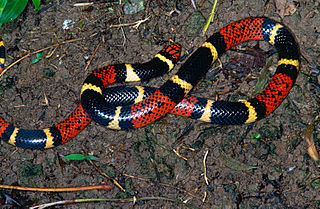 W
WThe aquatic coral snake is a semiaquatic species of coral snake in the family Elapidae found in northern South America. They have a highly potent venom, with a LD50 of 0,75 mg/kg.
 W
WThe big-scaled blind snake is a species of snake in the family Leptotyphlopidae. The species is endemic to southern Central America and northern South America.
 W
WBothrops atrox — also known as the common lancehead, fer-de-lance, barba amarilla and mapepire balsain — is a highly venomous pit viper species found in the tropical lowlands of northern South America east of the Andes. No subspecies are currently recognized.
 W
WBothrops bilineatus, also known as the two-striped forest-pitviper, parrotsnake, Amazonian palm viper, or green jararaca, is a highly venomous species of pit viper found in the Amazon region of South America. Two subspecies are currently recognized, including the nominate subspecies described here. A pale green arboreal species that may reach 1 m (3.3 ft) in length, it is an important cause of snakebite throughout the entire Amazon region.
 W
WBothrops brazili is a venomous pitviper species endemic to South America. No subspecies are currently recognized.
 W
WBothrops taeniatus, the speckled forest-pitviper, is a species of pit viper found in the equatorial forests of South America. The specific name, taenia, is derived from the Greek word, tainia, meaning ribbon bandage or stripe, in reference to the slender body. Two subspecies are currently recognized, including the nominate subspecies described here.
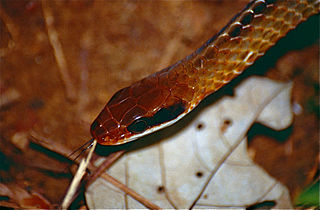 W
WThe brown sipo is a species of snake of the family Colubridae.
 W
WCuvier's dwarf caiman is a small crocodilian in the alligator family from northern and central South America. It is found in Bolivia, Brazil, Colombia, Ecuador, French Guiana, Guyana, Paraguay, Peru, Suriname, and Venezuela. It lives in riverine forests, flooded forests near lakes, and near fast-flowing rivers and streams. It can traverse dry land to reach temporary pools and tolerates colder water than other species of caimans. Other common names for this species include the musky caiman, the dwarf caiman, Cuvier's caiman, and the smooth-fronted caiman. It is sometimes kept in captivity as a pet and may be referred to as the wedge-head caiman by the pet trade.
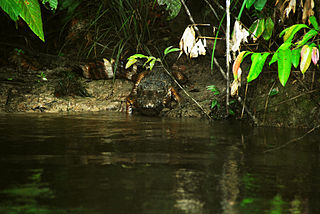 W
WThe smooth-fronted caiman, also known as Schneider's dwarf caiman or Schneider's smooth-fronted caiman, is a crocodilian from South America, where it is native to the Amazon and Orinoco Basins. It is the second-smallest species of the family Alligatoridae, the smallest being Cuvier's dwarf caiman, also from tropical South America and in the same genus. An adult typically grows to around 1.2 to 1.6 m in length and weighs between 9 and 20 kg. Exceptionally large males can reach as much as 2.3 m (7.5 ft) in length and 36 kg (79 lb) in weight.
 W
WThe spectacled caiman, also known as the white caiman, common caiman, and speckled caiman, is a crocodilian in the family Alligatoridae. It is brownish-, greenish-, or yellowish-gray colored and has a spectacle-like ridge between its eyes, which is where its common name come from. It grows to a length of 1.4–2.5 metres (4.6–8.2 ft) and a weight of 7–40 kilograms (15–88 lb), with males being both longer and heavier than females. Its diet varies seasonally, commonly consisting of crabs, fish, mammals, and snails. Breeding occurs from May to August and 14–40 eggs are laid in July and August. This crocodilian has a large range and population, native to much of Latin American and introduced to the United States.
 W
WCatesby's snail-eater, also commonly known as Catesby's snail sucker, is a nocturnal species of nonvenomous snake endemic to northern South America.
 W
WChironius scurrulus, commonly known as the smooth machete savane, is a large slender colubrid snake. It is also known as Wagler's sipo.
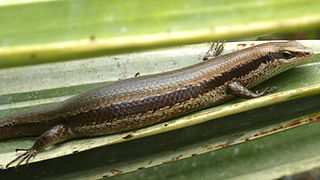 W
WCopeoglossum nigropunctatum, also known as the black-spotted skink, common coppery mabuya, or South American spotted skink, is a species of skink found in South America. It has shiny bronze or copper skin, with a dark longitudinal stripe along each flank that is often bordered by cream-colored lines.
 W
WCrotalus durissus is a highly venomous pit viper species found in South America. The most widely distributed member of its genus, this species poses a serious medical problem in many parts of its range. Currently, seven subspecies are recognized, including the nominate subspecies described here.
 W
WDipsas indica, also known as the Neo-tropical snail-eater, is a snake species found in South America. It feeds on slugs and snails, which the snake can extract from their shells using its slender jaw.
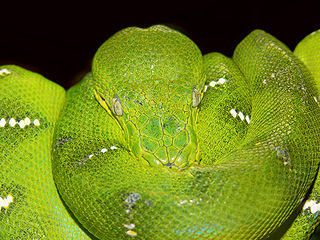 W
WCorallus caninus, commonly called the emerald tree boa, is a non-venomous boa species found in the rainforests of South America. Since 2009 the species Corallus batesii has been distinguished from C. caninus.
 W
WThe gold tegu, also known as golden tegu, common tegu, black tegu, Colombian tegu, and tiger lizard, is a species of tegu. Its old scientific name (synonym) was Tupinambis nigropunctatus, but it has since renamed to Tupinambis teguixin.
 W
WGymnophthalmus underwoodi, called commonly Underwood's spectacled tegu, is a species of microteiid lizard, which is found in South America and on certain Caribbean islands.
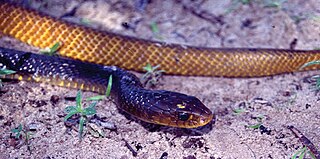 W
WThe Indigo snake is a species of snake of the family Colubridae. This large colubrid snake is nonvenomous.
 W
WLachesis muta is a venomous pit viper species found in South America. Two subspecies are currently recognized, including the nominate subspecies described here.
 W
WThe mata mata, mata-mata, or matamata (Chelus) is a freshwater turtle found in Pico Rivera Wetlands South America, primarily in the Amazon and Orinoco basins.
 W
WMesoclemmys gibba, known as the toadhead turtle or gibba turtle, is a small side necked turtle found in a wide area of South America, in Peru, Ecuador, Colombia, Venezuela, Trinidad, Guyana, Surinam, Paraguay, and parts of Brazil.
 W
WMicrurus hemprichii, commonly known as Hemprichi's coral snake, is a species of venomous coral snake in the family Elapidae.
 W
WMicrurus lemniscatus, commonly known as the South American coral snake, is a species of venomous snake in the family Elapidae. The species is endemic to South America.
 W
WNeusticurus bicarinatus, the two-faced neusticurus, is a species of lizard in the family Gymnophthalmidae. It is found in Suriname, French Guiana, Venezuela, Guyana, and Brazil.
 W
WThe northern caiman lizard is a species of lizard found in northern South America.
 W
WOxybelis fulgidus, commonly known as the green vine snake or the flatbread snake, is a species of long, slender, arboreal colubrid snake, which is endemic to Central America and northern South America.
 W
WOxyrhopus petolarius, commonly known as the false coral, is a species of snake in the family Colubridae. The species is endemic to South America. There are three recognized subspecies.
 W
WThe common green racer is a species of venomous snake of the family Colubridae.
 W
WPhrynonax poecilonotus is a species of nonvenomous snake in the family Colubridae. The species is endemic to the New World.
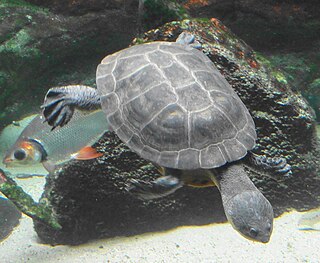 W
WPhrynops geoffroanus, commonly known as Geoffroy's side-necked turtle or Geoffroy's toadhead turtle, is a species of large side-necked turtle in the family Chelidae. The species is endemic to South America.
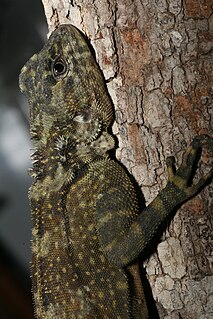 W
WPlica plica is a species of lizard in the family Tropiduridae, the Neotropical ground lizards. Its common names include collared tree lizard, collared tree runner, and harlequin racerunner. In Guyana it is known as wakanama.
 W
WPseudoboa neuwiedii, commonly known as the ratonel or ratonera (mouse-eater), is a species of snake in the family Colubridae. The species is endemic to northern South America.
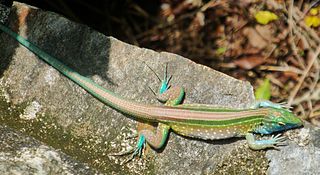 W
WThe rainbow whiptail is a species of lizard found in Central America, the Caribbean, and northern South America. It has also been introduced in Florida and has established populations there. A rainbow whiptail grows up to approximately 12 inches (30.5 cm).
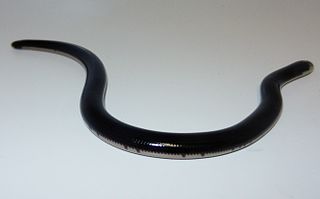 W
WThe reticulate worm snake is a species of snake in the Typhlopidae family. The snake has been reported in Colombia, Peru, Bolivia, Brazil, the Guyanas and Venezuela.
 W
WThe painted wood turtle or spot-legged wood turtle is a species of turtle belonging to the genus Rhinoclemmys of the family Geoemydidae.
 W
WTantilla melanocephala, commonly known as the black-headed snake, is a species of small colubrid snake endemic to Central America and South America.
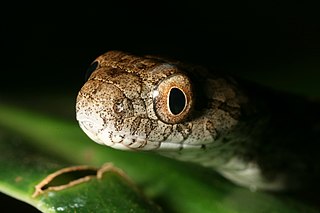 W
WThamnodynastes pallidus is a species of snake in the family Colubridae. The species is endemic to South America.
 W
WTropidurus torquatus is a species of lizard in the family Tropiduridae, the Neotropical ground lizards. Its common name is Amazon lava lizard.
 W
WThe twist-necked turtle also known as the flat-headed turtle, is distributed widely across northern South America. Twist-necked turtles have extremely flat shells that help them hide from predators under rocks and debris. When threatened, this turtle withdraws by twisting its head into its shell. P. platycephala is the only species of the genus Platemys and occurs in northern and central South America. Platemys platycephala means “flat turtle, flat-head” and accurately describes the structure of the head and shell. This species inhabits shallow creek beds and frequently forages on the floor of the Amazon rainforest for insects, amphibians, and mollusks. Camouflage, head and body shape, and advanced sexual anatomy allow this species of turtle to effectively populate much of South America. Mating occurs during rainy months (March–December) and egg deposit occurs during dry months (January–March). Males have been known to behave aggressively towards females during copulation by squirting water from nostrils and biting. A few genomic studies show mosaicism exists among populations of the twist-necked turtle in Surinam. In other words, diploid and triploid levels exist among individuals at this particular location. No threats have been reported for this species and the International Union for Conservation of Nature does not have a current listing. Lack of human consumption due to the species' small size and its wide range explain why scientists are not concerned about this turtle species.
 W
WXenodon merremii, also known commonly as Wagler's snake, is a species of snake in the subfamily Dipsadinae of the family Colubridae. The species is endemic to South America and is widespread in the eastern half of the continent.